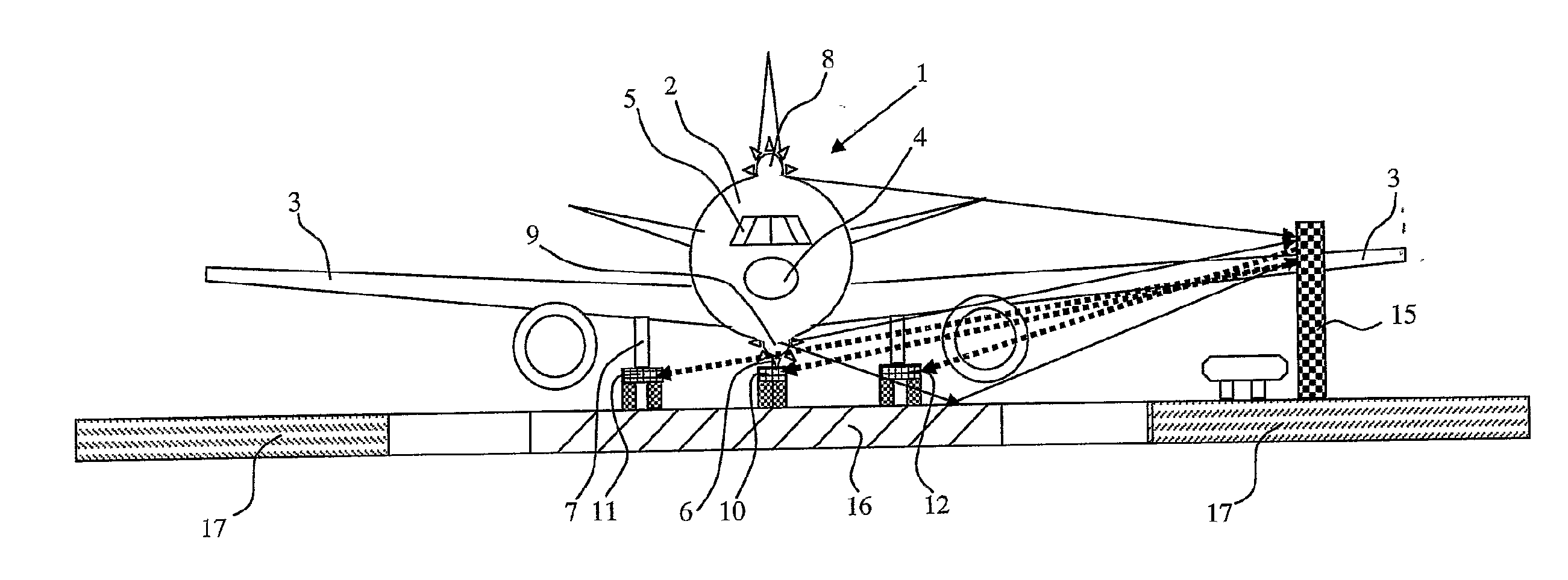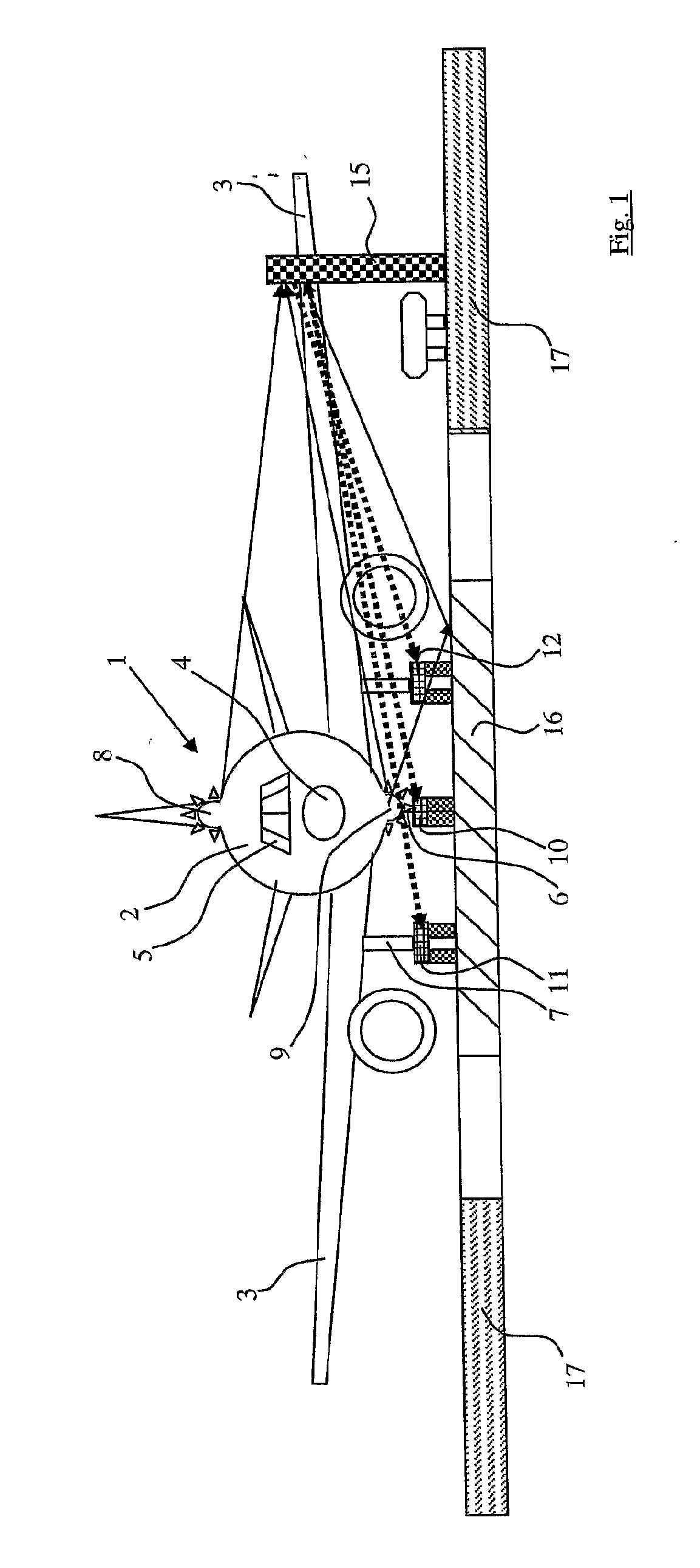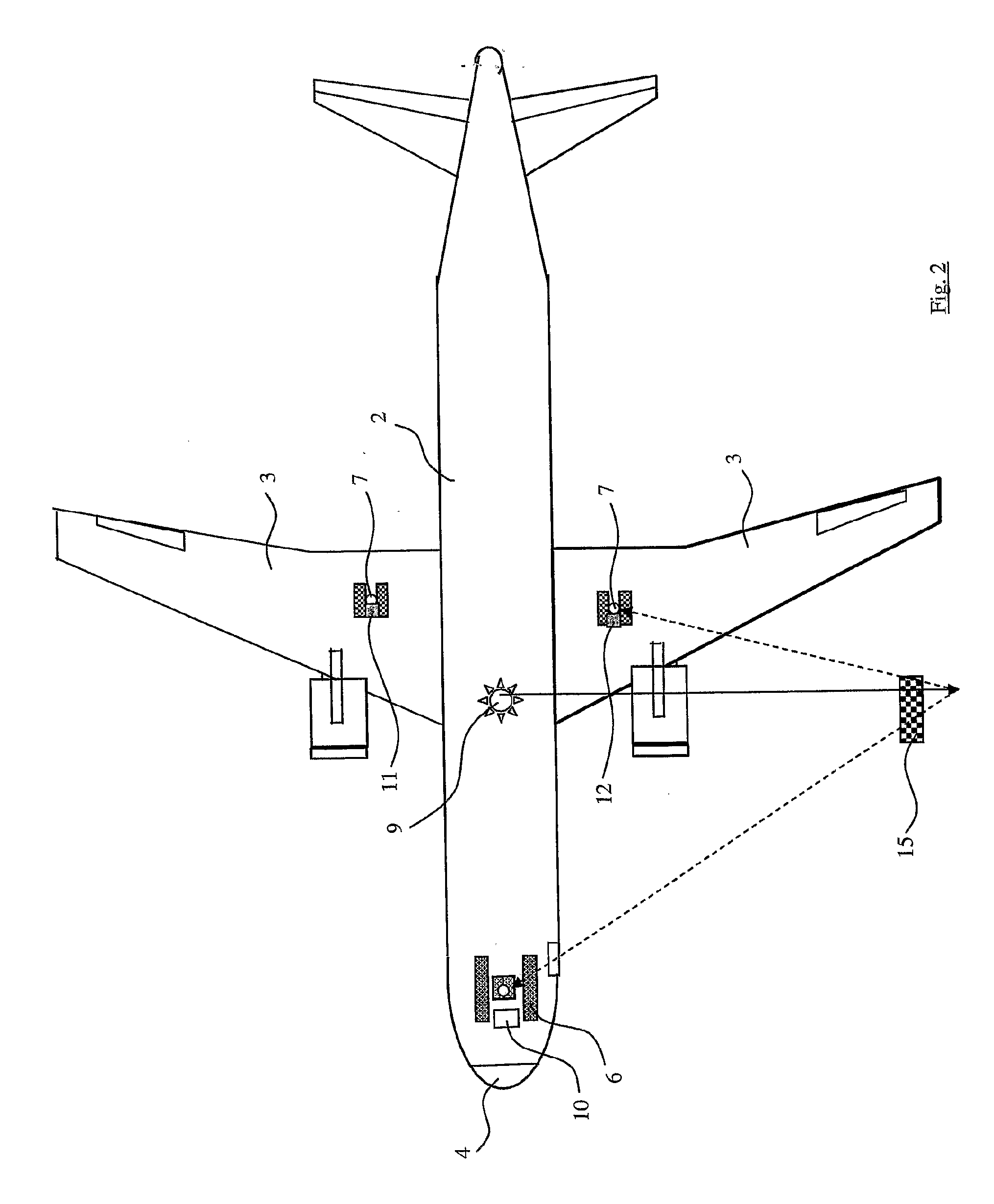Collision Avoidance Warning And Taxi Guidance Device
a technology of collision avoidance and taxi guidance, which is applied in direction/deviation determining electromagnetic systems, instruments, and using reradiation, etc., can solve problems such as equipment on the ground or indeed, aircraft on the ground, other aircraft, vehicles, etc., and achieve the effect of not relevant or indeed available devices
- Summary
- Abstract
- Description
- Claims
- Application Information
AI Technical Summary
Benefits of technology
Problems solved by technology
Method used
Image
Examples
Embodiment Construction
[0048] The invention will be more clearly understood from the following description of some embodiments thereof, given by way of example only, with reference to the accompanying drawings, in which:
[0049]FIG. 1 is a front partially diagrammatic view of an aircraft incorporating the invention,
[0050]FIG. 2 is an underneath plan view of the aircraft,
[0051]FIG. 3 is a front view of the aircraft,
[0052]FIG. 4 is a diagrammatic view showing the operation of the invention,
[0053]FIG. 5 is a view of one display according to the invention,
[0054]FIG. 6 is a plan view showing the various warning zones incorporated in the invention for an aircraft taxiing,
[0055]FIG. 7 is a view similar to FIG. 6 showing an aircraft manoeuvring in company with other aircraft,
[0056]FIG. 8 is a plan view showing various stand manoeuvring alert zones for an aircraft,
[0057]FIG. 9 is a side view of the aircraft of FIG. 8,
[0058]FIG. 10 is a front view of the aircraft of FIG. 8,
[0059]FIG. 11 is a rear view of t...
PUM
 Login to View More
Login to View More Abstract
Description
Claims
Application Information
 Login to View More
Login to View More - R&D
- Intellectual Property
- Life Sciences
- Materials
- Tech Scout
- Unparalleled Data Quality
- Higher Quality Content
- 60% Fewer Hallucinations
Browse by: Latest US Patents, China's latest patents, Technical Efficacy Thesaurus, Application Domain, Technology Topic, Popular Technical Reports.
© 2025 PatSnap. All rights reserved.Legal|Privacy policy|Modern Slavery Act Transparency Statement|Sitemap|About US| Contact US: help@patsnap.com



